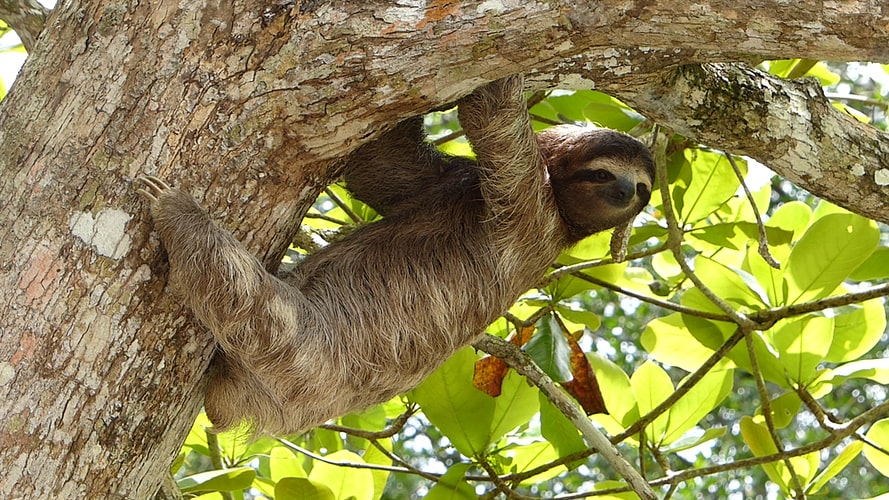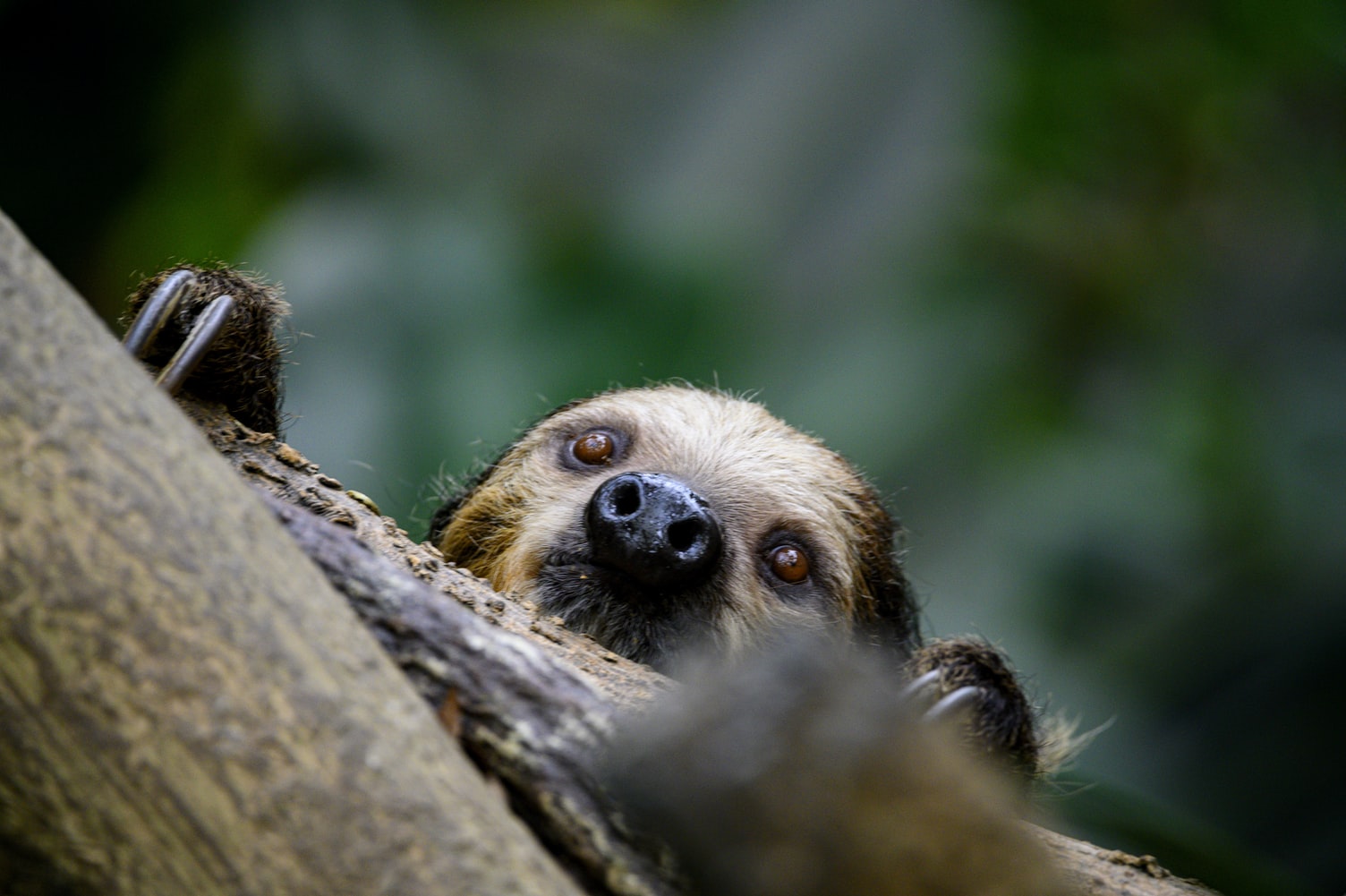Today is International Sloth Day! We are excited to have a full day to celebrate these funny-looking mammals. Take some time today to read through some of these fun sloth facts that will make you love them even more.
You might even feel like taking it slow today in their honor.
Sloths are my favorite animals. Sure, they don’t seem to do much, but they’re actually pretty neat. They are one of our planet’s most interesting creatures.
Their popularity has considerably increased in the past few years, and they can now be found on all types of novelty items. From mugs (which I have) to shirts (which I also have), to even socks (yes, I have these too).
What makes sloths so special? Well, take a look for yourself.
Double-Trouble
It is important that we first note that there are two different types of sloths, the two-toed and the three-toed. The larger and more “weird-looking” of the two is the three-toed sloth. The smaller and more peaceful-looking one is the two-toed sloth. Although both are relatively slow creatures, three-toed sloths tend to be more active in the daytime, while two-toed sloths tend to be more active during nighttime.
So, try not to confuse them, and correct those who do.
Nothing Short of Phelps
Sloths are really slow creatures on land. They can crawl at the not-so-impressive speed of about three feet per minute or less. And even on trees they will not travel more than 120 feet per day.
But funnily enough, sloths are pretty fast swimmers. They move up to three times their normal speed and can even hold their breath for forty minutes! You can find them swimming in order to cross to certain territories or even to reach a destination at a faster speed.
This is also a really important skill that ensures their survival in the tropical ecosystems they inhabit, for at times of heavy rain these can become flooded. So do not worry about all the water they’re showered in. They welcome it.

How Many Fingers am I Holding Up?
Sloths have terrible eyesight. They have trouble seeing anything that is five or more feet away from them. They can’t see in color, and the resolution of their vision is extremely low.
How are they such good climbers then? Well, they have to rely on their other senses, such as smell and touch. And sadly, even these senses fail them at times. Some sloths are known to have fallen to their deaths after confusing their own arms for branches while at really extreme heights. Yikes!
Purposeful “Laziness”
If the traditional fable, “The Tortoise and the Hare” was actually the “Sloth and the Hare,” then the hare would probably win, no matter long he slept, because there is no way a sloth could’ve beat him.
Sloths are the slowest creatures on this planet. Yes, even slower than snails. But their slowness is the thing that has actually ensured their survival.
Sloths may take up to a full month to digest a single meal. And their diet, which mostly consists of leaves, is not exactly the most nutritious. So by moving slowly they conserve necessary energy to survive.
Even further, their slowness helps them go undetected by predators that rely on movement to hunt. A sloth could be hanging out next to a hungry jaguar, and the cat would probably not even notice.

Nutritional Camouflage
Have you ever noticed a greenish color in the fur of some sloths? Well, that green layer is actually algae. Sloths have a symbiotic relationship with this plant.
Sloths’ fur provides the algae with the necessary water it needs to survive, while algae provides the sloth with a camouflaged appearance that protects them from predators. Sloths can also eat the algae to receive some nutrients. It’s a win-win situation for both parties.
A Crappy Situation
Sloths poop about once a week (if they’re lucky). Remember they have really slow metabolisms, so this makes sense. A single sloth’s poop may weigh up to a third of the animal’s body weight.
However, while two-toed sloths do not mind dropping bombs away from high above, three-toed sloths follow a more specific ritual. Every time they need to relieve themselves, they crawl down to the forest floor. There they dig a small hole in which to drop and bury their feces.
Sadly, sloths are completely vulnerable to predators during this time, and many end up getting killed. More than half of all sloth deaths probably occur when the sloths are on the ground doing their business.
And even further, sloths like to poop in the same place. So some predators might even wait at a sloth’s favorite place in order to catch them as they are making their way down for their weekly poop.
Sleeping Beauty
To conclude, let’s debunk a popular myth: sloths do not sleep all day. In fact, they only sleep as much as you and I do (about 8 hours a day).
Yes, they’re slow, but this doesn’t mean they don’t do anything. It’s just that doing something takes up a lot more of their time. But give them some credit, they are truly trying their best. And for this reason, they need to be celebrated!
Ensure the survival of our hairy friends, by supporting organizations that protect its ecosystems.
Keep up with all of Green Living‘s content online and on social media.






